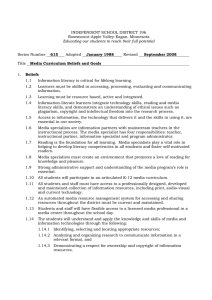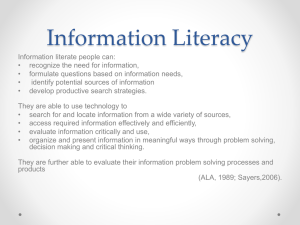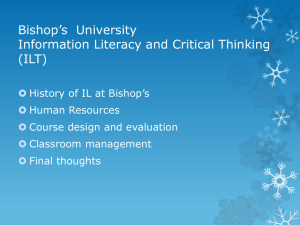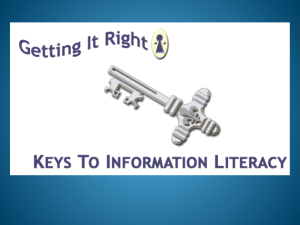Combating plagiarism in scientific research CORRESPONDENCE
advertisement
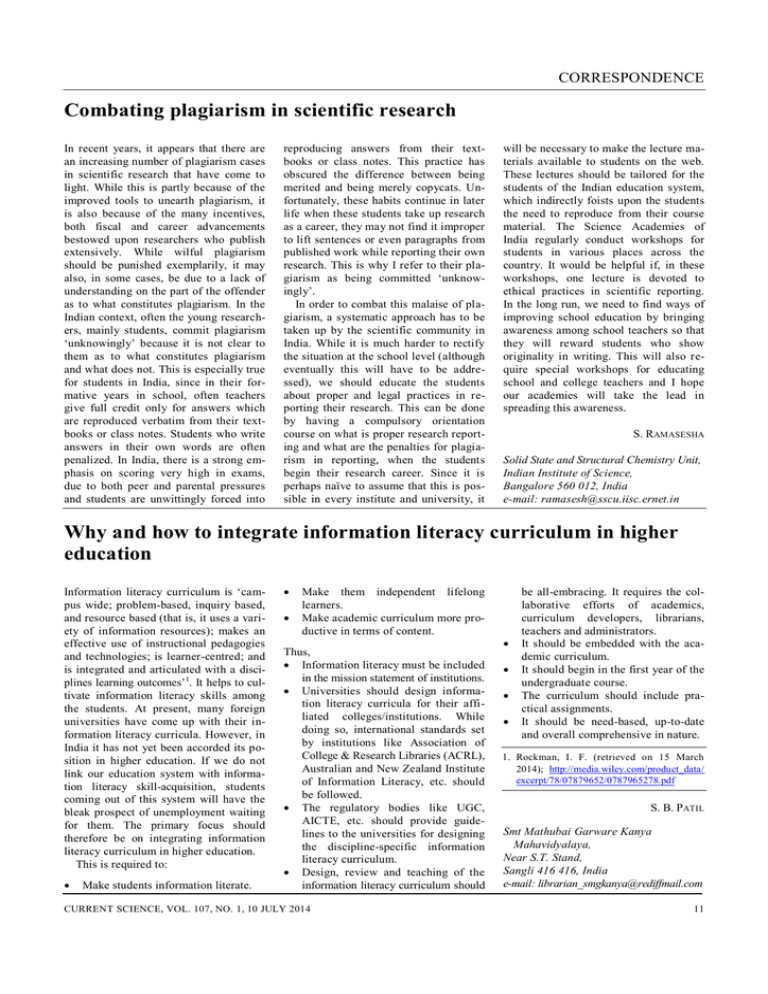
CORRESPONDENCE Combating plagiarism in scientific research In recent years, it appears that there are an increasing number of plagiarism cases in scientific research that have come to light. While this is partly because of the improved tools to unearth plagiarism, it is also because of the many incentives, both fiscal and career advancements bestowed upon researchers who publish extensively. While wilful plagiarism should be punished exemplarily, it may also, in some cases, be due to a lack of understanding on the part of the offender as to what constitutes plagiarism. In the Indian context, often the young researchers, mainly students, commit plagiarism ‘unknowingly’ because it is not clear to them as to what constitutes plagiarism and what does not. This is especially true for students in India, since in their formative years in school, often teachers give full credit only for answers which are reproduced verbatim from their textbooks or class notes. Students who write answers in their own words are often penalized. In India, there is a strong emphasis on scoring very high in exams, due to both peer and parental pressures and students are unwittingly forced into reproducing answers from their textbooks or class notes. This practice has obscured the difference between being merited and being merely copycats. Unfortunately, these habits continue in later life when these students take up research as a career, they may not find it improper to lift sentences or even paragraphs from published work while reporting their own research. This is why I refer to their plagiarism as being committed ‘unknowingly’. In order to combat this malaise of plagiarism, a systematic approach has to be taken up by the scientific community in India. While it is much harder to rectify the situation at the school level (although eventually this will have to be addressed), we should educate the students about proper and legal practices in reporting their research. This can be done by having a compulsory orientation course on what is proper research reporting and what are the penalties for plagiarism in reporting, when the students begin their research career. Since it is perhaps naïve to assume that this is possible in every institute and university, it will be necessary to make the lecture materials available to students on the web. These lectures should be tailored for the students of the Indian education system, which indirectly foists upon the students the need to reproduce from their course material. The Science Academies of India regularly conduct workshops for students in various places across the country. It would be helpful if, in these workshops, one lecture is devoted to ethical practices in scientific reporting. In the long run, we need to find ways of improving school education by bringing awareness among school teachers so that they will reward students who show originality in writing. This will also require special workshops for educating school and college teachers and I hope our academies will take the lead in spreading this awareness. S. RAMASESHA Solid State and Structural Chemistry Unit, Indian Institute of Science, Bangalore 560 012, India e-mail: ramasesh@sscu.iisc.ernet.in Why and how to integrate information literacy curriculum in higher education Information literacy curriculum is ‘campus wide; problem-based, inquiry based, and resource based (that is, it uses a variety of information resources); makes an effective use of instructional pedagogies and technologies; is learner-centred; and is integrated and articulated with a disciplines learning outcomes’1. It helps to cultivate information literacy skills among the students. At present, many foreign universities have come up with their information literacy curricula. However, in India it has not yet been accorded its position in higher education. If we do not link our education system with information literacy skill-acquisition, students coming out of this system will have the bleak prospect of unemployment waiting for them. The primary focus should therefore be on integrating information literacy curriculum in higher education. This is required to: Make students information literate. Make them independent lifelong learners. Make academic curriculum more productive in terms of content. Thus, Information literacy must be included in the mission statement of institutions. Universities should design information literacy curricula for their affiliated colleges/institutions. While doing so, international standards set by institutions like Association of College & Research Libraries (ACRL), Australian and New Zealand Institute of Information Literacy, etc. should be followed. The regulatory bodies like UGC, AICTE, etc. should provide guidelines to the universities for designing the discipline-specific information literacy curriculum. Design, review and teaching of the information literacy curriculum should CURRENT SCIENCE, VOL. 107, NO. 1, 10 JULY 2014 be all-embracing. It requires the collaborative efforts of academics, curriculum developers, librarians, teachers and administrators. It should be embedded with the academic curriculum. It should begin in the first year of the undergraduate course. The curriculum should include practical assignments. It should be need-based, up-to-date and overall comprehensive in nature. 1. Rockman, I. F. (retrieved on 15 March 2014); http://media.wiley.com/product_data/ excerpt/78/07879652/0787965278.pdf S. B. PATIL Smt Mathubai Garware Kanya Mahavidyalaya, Near S.T. Stand, Sangli 416 416, India e-mail: librarian_smgkanya@rediffmail.com 11
